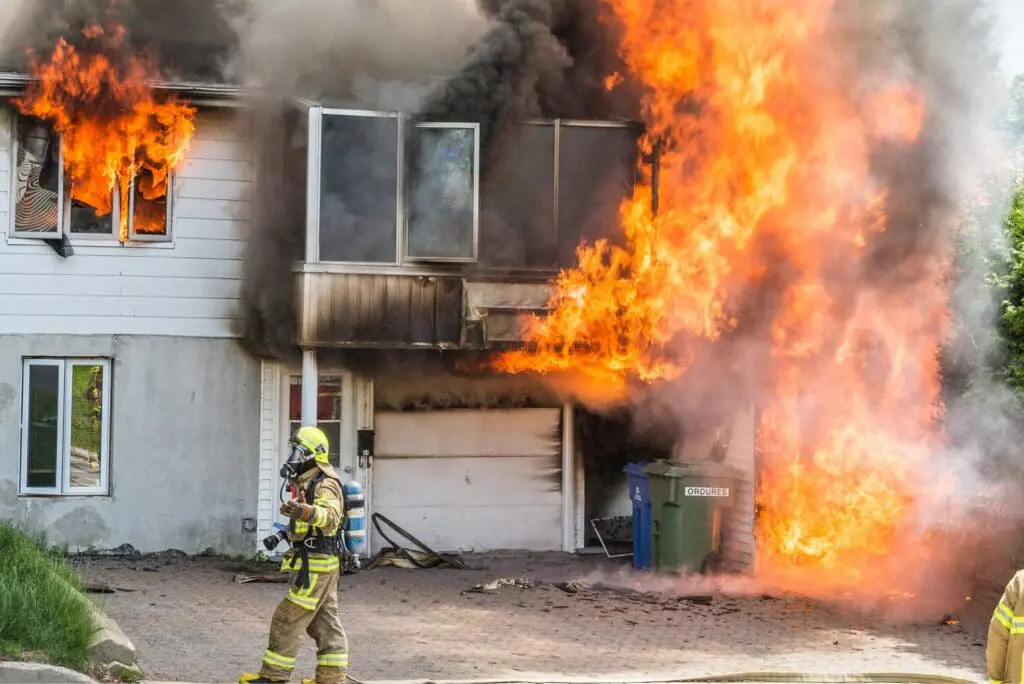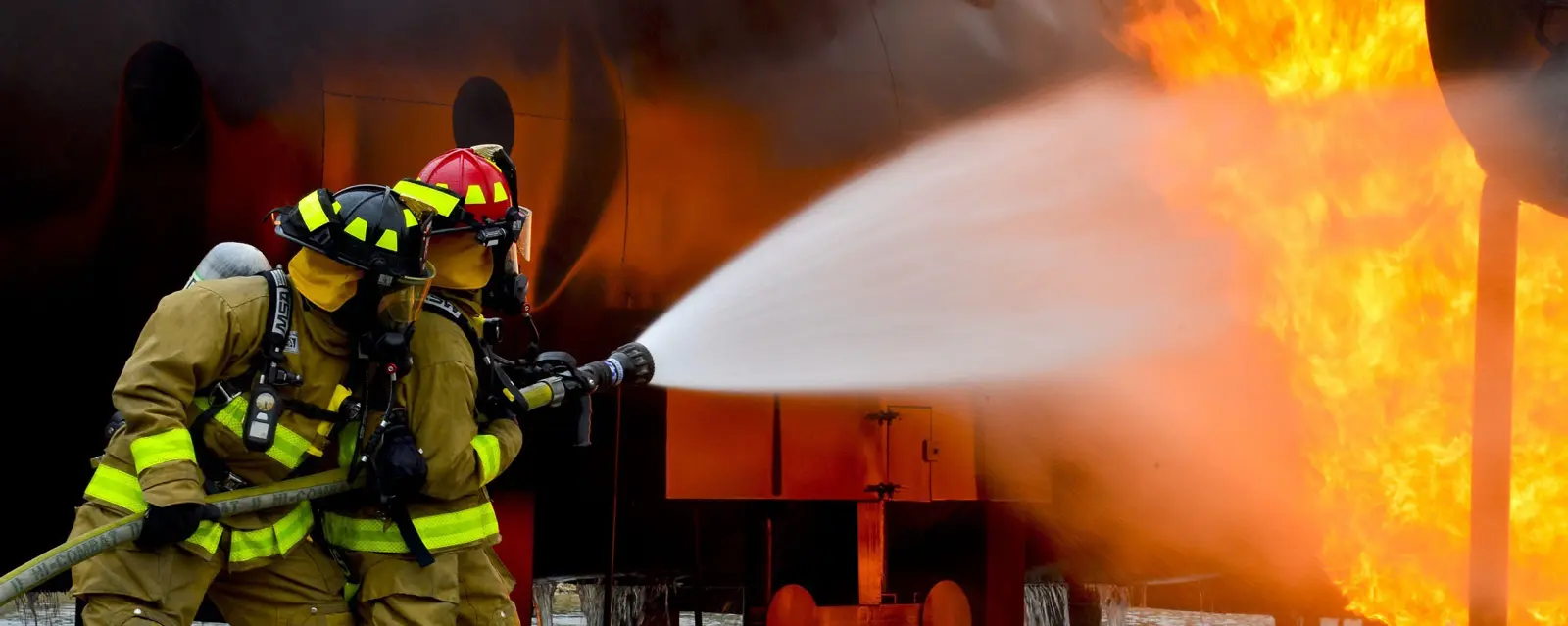Fires can alter your whole life in an instant, but knowing basic fire safety will ensure that you and your loved ones will still be around to live that life.
Studies have shown that house fires are the most common type of fire in the world in 2017. It’s also the most destructive. The heat can reach 1100 degrees Fahrenheit in a matter of seconds. The temperature in rooms not on fire can hit over 300 degrees, which is enough to lead to the deaths of people in the room.
Fortunately, it’s easy to prevent this tragedy with common sense and basic knowledge of fire safety and prevention. Read on to find out what we can do to keep our family and homes safe.
Importance of Fire Safety Awareness
A person needs to know fire safety awareness to deal with the fire breaking out. Fire safety awareness is the capability to evaluate the risks that can lead to danger and identifying the appropriate measures to prevent burning or reduce the damage it could cause.
While having a safety plan is necessary, you should know that it differs per locations. For instance, the way you handle a home fire will be different when it happens in school or a high-rise. But the goal is the same in every situation – the protection and successful evacuation of everyone in the location.
Proper training is essential to develop effective and efficient fire safety awareness. It will teach you the crucial steps to take in case a fire breaks out. It also prepares you physically, mentally, and emotionally on how to keep calm during this stressful situation.
Top Causes of Fire in the Home

They say that knowing is half the battle. You have to understand what the common causes of a house fire are so you can prevent them. Here’s what you should look out for:
- Faulty wiring and appliances: It’s the number one cause of home fires. You can tell if you have faulty wiring when your fuses are always blowing, or the circuit is frequently tripping. Lights that dim when you use an appliance is another indication.
- Heating devices like fireplaces, stoves, and heaters: Fire can start if the source becomes too hot or ignites and there’s furniture or fabric near it.
- Electrical appliances: They might be essential to our lives, but they’re also a common cause of fire. Gadgets with frayed cords can cause a spark while an extension cord can be hazardous if not used correctly.
- Candles: Scented candles might add character to the room, but if left unattended, it can burst into flames. Keep it away from flammable materials and always blow it out when you leave the room.
- Cigarettes: Not only is it bad for your health, but it’s also one of the usual things that start a fire. A fire can start when a lit cigar is dropped on furniture before people go to sleep or leave the room.
- Children literally playing with fire: Kids are curious creatures and can cause a fire because of it. Always keep lighters or matches away from them and teach them never to touch the stove.
Basic Fire Safety Practices to Know
Plan Your Escape Route in Advance
Planning your escape routes properly and advance will help save your family’s lives. Draw a map of your home, complete with doors and windows. Determine two escape routes, a primary and secondary one. The second route is what you’ll follow if the first way is unpassable.
Inform everyone about the escape plan and conduct a fire drill. Practice using different scenarios, like a night fire or when visibility is terrible. Do the exercise in total darkness or with eyes closed. The more you practice, the more prepared you’ll be.
Stay Calm
Panicking will cause your brain to shut down so you can’t think things through properly. If you are caught inside your home during a fire, stay calm and remember these tips –
- Close the door and keep the smoke out by plugging the crack with clothes or blankets.
- Call the fire department to let them know your location in the building. You can also try hanging a piece of clothing out a window to alert the responders of where you are.
Try to Put Out the Fire if Possible
Assess whether you can out the fire in your home while you’re calling the fire department. As a basic fire safety precaution, try extinguishing the fire if it’s still small and you know that the firefighters are on their way. It can help minimize damage or ensure it won’t get worse. However, if it’s too hot and there’s too much smoke, it’s best to leave it to the professionals and get out.
Stop, Drop, and Crawl
The heat and smoke can sometimes pose a more significant threat in a house fire. Temperatures can reach around 100 degrees or more near the ground and almost 600 degrees near the ceiling.
In the event of dense smoke, your best move is to drop to the ground as the air here is clearer. Place a damp towel or cloth over your nose to filter out smoke and start crawling to the closest exit.
Check Doors Before Opening
If there’s a fire, do not walk into a room without testing the doorknobs first. A hot doorknob means it’s not safe to enter the room. The fire could be raging there as well. Opening the door will only increase the flow of air and cause the blaze to accelerate.
Take the Stairs
Always take the fire escape or stairs when there’s a fire. An elevator could give or fail during a fire, leaving you trapped inside, which is not a basic fire safety practice at all cost.
Always Put Humans and Pets First
No one can replace your family members and pets, so think of them first. Help the most vulnerable first, like a disabled member or a baby. Grab essential documents (driver’s license, birth certificates, passports), photo albums, jewelry, or your laptop only when if there’s enough time. Otherwise, forget about it. You can always replace material things.
Stay Out
Once everyone is out, make sure they stay put. Do not go back inside your home for anything. Leave it to firefighters since they have the training and the proper safety equipment for it. You should also keep a reasonable distance from the burning building. There’s a possibility of having an explosion, and you could become injured if you’re too near the structure.
Basic Fire Safety Tips to Teach Children
- Familiarize them to the sound of a smoke alarm. Young ones might get scared and hide when the smoke alarm turns on. Familiarize them with the sound and explain to them that it’s a fire warning. It will make them more aware and respond appropriately.
- Show them what a firefighter looks like when responding to a fire. Children might become frightened when they see a firefighter decked out in an air mask and carrying an ax. It’s best to introduce them to the equipment these responders use so they’ll know what to expect.
- Teach your child at least two ways to get out of each room of the house (ex. windows and doors).
- Teach them to call for help. Children should know how and when to call emergency numbers.
- Agree on where to meet after escaping from the house. Decide on a designated meeting place in case of emergencies. Make sure every family member knows where it is and understands it’s where everyone should go. It will also help firefighters know that all residents have made it outside.
Things Your Home Needs to Prevent Fire

You might have as little as two minutes to get out of a burning house. But a functioning smoke alarm and the right safety products can either prevent a fire from blazing out of hand or help you survive. Here’s what you should always have at home:
- Smoke Detectors: This early warning system is an immense help in getting people out to safety. It can also help you get a fire under control. Install detectors in every room and conduct monthly tests to ensure it’s working.
- Fire Sprinklers: This system can help reduce the heat and blaze before the firefighters can arrive. It’s a bit of an investment but one that worth every cent.
- Extinguishers: Always keep a fire extinguisher in your kitchen, garage, workshop areas, and every level of your home. They come in handy when there’s a small fire and can help prevent a massive fire. Check it regularly to make sure they will work properly.
- Fire Blanket: This fire-retardant blanket can smother small fires so they won’t get bigger.
- Escape Ladder: Invest in fire escape ladders if your home has more than one floor. They can help you escape safely and quickly from out a window.
- Extinguisher Ball: This self-activating extinguisher is a relatively new fire safety product. It’s lightweight, safe, and can easily be operated by every member of the family, including children.
Always Remember
Prevention should always be the primary consideration when it comes to protecting your family from a devastating fire. Bolster it with the best fire safety products that only a company like Firetech Global can provide. Their products, along with your family’s knowledge of basic fire safety protocols, will keep everyone safe.







